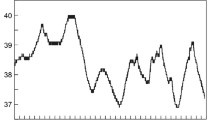Abstract
Among the tasks of prediction, the task of predicting the signs of increments (direction of change) of the time series process is singled out separately. The essential difference of this problem from the prediction of values (ordinates) of time series implementations is the weak correlation of increments, which, from the point of view of the classical theory of time series forecasting, leads to certain difficulties. First of all, this refers to a non-stationary process, the prediction of which requires constant retraining of the parameters of the predictors used (for example, the weight coefficients of the neural network) over relatively short time intervals, which leads to time costs. This may be unacceptable, for example, when using the prediction of traffic characteristics in telecom networks, when predicting the direction of the gradient in optimization problems, etc.
The paper proposes the use of some results of the theory of random processes for the estimated fast prediction of increments with acceptable accuracy. The proposed procedure of the fast prediction is a simple heuristic rule for predicting the sign of the increment of two neighboring values of a random sequence.
Access this chapter
Tax calculation will be finalised at checkout
Purchases are for personal use only
Similar content being viewed by others
References
Assaf Almog, A., Garlaschelli, D.: Binary versus non-binary information in real time series: empirical results and maximum-entropy matrix models. New J. Phys. 16(9), 093015 (2014)
Christoffersen, P., Diebold, F.: Financial asset returns, direction-of-change forecasting, and volatility dynamics. Manage. Sci. 52(8), 1273–1287 (2006)
Bosq, D., Nguyen, H.T.: A Course in Stochastic Processes. Stochastic Models and Statistical Inference. Kluwer, Dordrecht (1996)
Pliska, S.R.: Introduction to Mathematical Finance: Discrete Time Models. Blackwell, Maldon, Mass (1997)
Mozo, A., Ordozgoiti, B., Gómez-Canaval, S.: Forecasting short-term data center network traffic load with convolutional neural networks. PLoS ONE 13(2), e0191939 (2018). https://doi.org/10.1371/journal.pone.0191939
Lysyak, A.S., Ryabko, B.Y.: Time series prediction based on data compression methods. Probl. Inf. Transm. 52(1), 92–99 (2016). https://doi.org/10.1134/S0032946016010075
Hodgea, V., Krishnanb, R., Austina, J., Polakb, J., Jackson, T.: Short-Term Prediction of Traffic Flow Using a Binary Neural Network. Neural Comput. Appl. 25(7–8), 1639–1655 (2014)
Chen, A., Law, J., Aibin, M.: A survey on traffic prediction techniques using artificial intelligence for communication networks. Telecom 2, 518–535 (2021). https://doi.org/10.3390/telecom2040029
Shimall, T.: Traffic Analysis for Network Security: Two Approaches for Going Beyond Network Flow Data, 16 September 2016. https://citeseerx.ist.psu.edu/viewdoc/download?doi=10.1.1.513.7546&rep=rep1&type=pdf
Volovich, K.I., Denisov, S.A., Shabanov, A.P., Malkovsky, S.I.: Aspects of the assessment of the quality of loading hybrid high-performance computing cluster. In: 5th International Conference on Information Technologies and High-Performance Computing, ITHPC 2019. CEUR Workshop Proceedings, 16–19 September 2019, vol. 2426, pp. 7–11 (2019)
Leadbetter, M.R., Lindgren, G., Rootzén, H.: Extremes and Related Properties of Random Sequences and Processes. Springer, New York (1983). https://doi.org/10.1007/978-1-4612-5449-2
Sornette, D., Andersen, J.V.: Increments of uncorrelated time series can be predicted with a universal 75% probability of success. Int. J. Mod. Phys. 11(4), 713–720 (2000)
Andersen, T.G., Bollerslev, T., Christoffersen, P.F., Diebold, F.X.: Volatility and correlation forecasting. In: Elliot, G., Granger, C.W.J., Timmermann, A. (eds.), Handbook of Economic Forecasting, pp. 778–878. North-Holland, Amsterdam (2006)
Lavasani, A., Eghlidos, T.: Bit test for evaluating pseudorandom sequences. Comput. Sci. Eng. Electr. Eng. 16(1), 19–33 (2009)
Box, G.E.P., Jenkins, G.M., Reinsel, G.C.: Time Series Analysis: Forecasting and Control. Wiley, New York (2008)
Rabiner, L.R., Rader, C.M.: Digital Signal Processing. IEEE Press Selected Reprint Series, 1 December 1994
Feder, M., Merhav, N., Gutman, M.: Universal prediction of individual sequences. IEEE Trans. Inf. Theor. 38(4), 887–892 (1992)
Campbell, J.Y., Lo, A.W., MacKinlay, A.C.: The Econometrics of Financial Markets. Princeton University Press (1997)
Hasanov, V., Bayramov, H., Mehdiyev, H.: Prediction of network traffic based on neural-fuzzy analysis of changes in the volume of IP-packets. In: 9th International Conference on Theory and Application of Soft Computing, Computing with Words and Perception, ICSCCW 2017, pp. 438–445 (2017)
Author information
Authors and Affiliations
Corresponding author
Editor information
Editors and Affiliations
Rights and permissions
Copyright information
© 2022 Springer Nature Switzerland AG
About this paper
Cite this paper
Frenkel, S. (2022). Predicting the Direction of Changes in the Values of Time Series for Relatively Small Training Samples. In: Dolev, S., Katz, J., Meisels, A. (eds) Cyber Security, Cryptology, and Machine Learning. CSCML 2022. Lecture Notes in Computer Science, vol 13301. Springer, Cham. https://doi.org/10.1007/978-3-031-07689-3_9
Download citation
DOI: https://doi.org/10.1007/978-3-031-07689-3_9
Published:
Publisher Name: Springer, Cham
Print ISBN: 978-3-031-07688-6
Online ISBN: 978-3-031-07689-3
eBook Packages: Computer ScienceComputer Science (R0)




